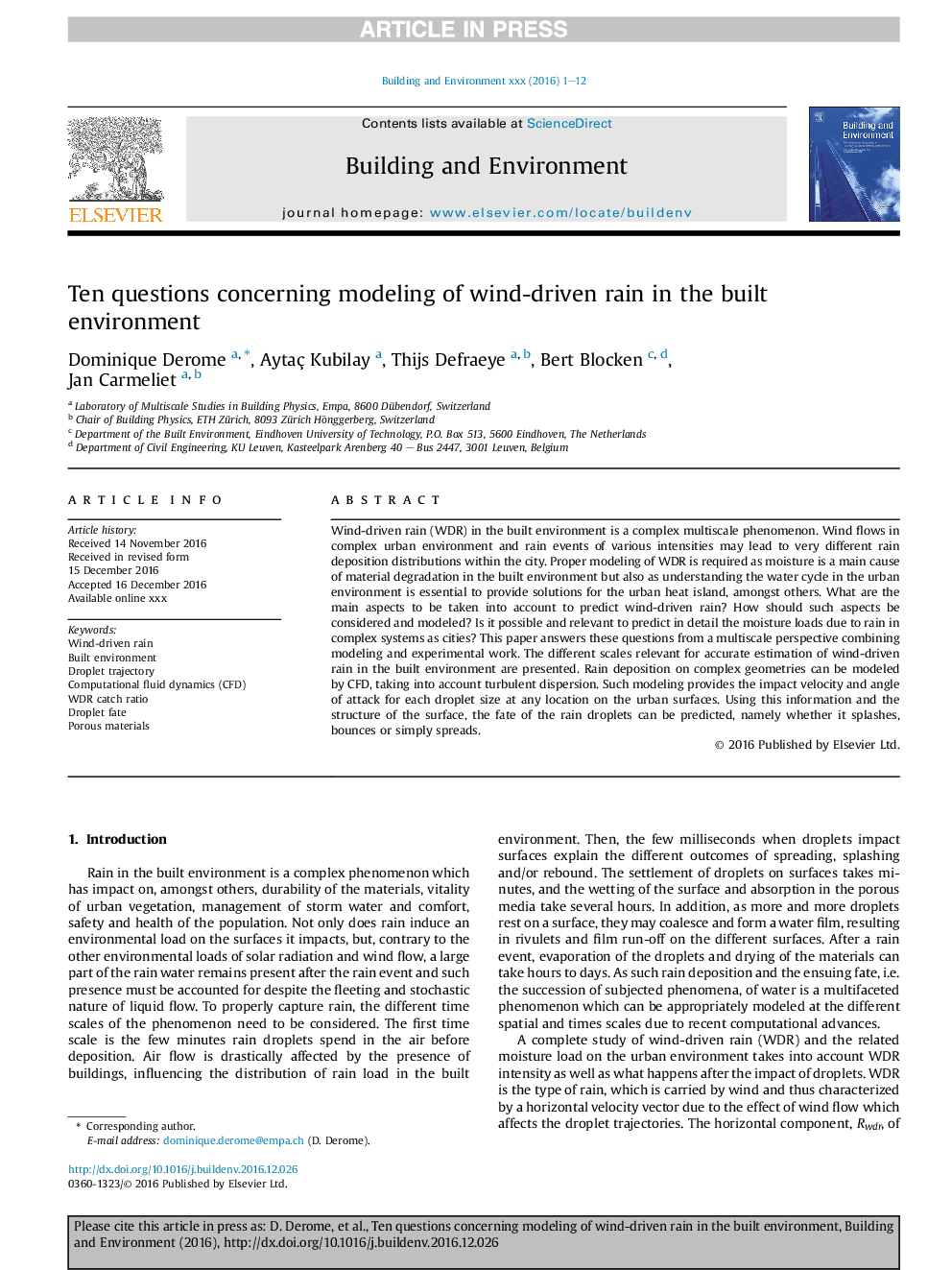| Article ID | Journal | Published Year | Pages | File Type |
|---|---|---|---|---|
| 4917398 | Building and Environment | 2017 | 12 Pages |
Abstract
Wind-driven rain (WDR) in the built environment is a complex multiscale phenomenon. Wind flows in complex urban environment and rain events of various intensities may lead to very different rain deposition distributions within the city. Proper modeling of WDR is required as moisture is a main cause of material degradation in the built environment but also as understanding the water cycle in the urban environment is essential to provide solutions for the urban heat island, amongst others. What are the main aspects to be taken into account to predict wind-driven rain? How should such aspects be considered and modeled? Is it possible and relevant to predict in detail the moisture loads due to rain in complex systems as cities? This paper answers these questions from a multiscale perspective combining modeling and experimental work. The different scales relevant for accurate estimation of wind-driven rain in the built environment are presented. Rain deposition on complex geometries can be modeled by CFD, taking into account turbulent dispersion. Such modeling provides the impact velocity and angle of attack for each droplet size at any location on the urban surfaces. Using this information and the structure of the surface, the fate of the rain droplets can be predicted, namely whether it splashes, bounces or simply spreads.
Keywords
Related Topics
Physical Sciences and Engineering
Energy
Renewable Energy, Sustainability and the Environment
Authors
Dominique Derome, Aytaç Kubilay, Thijs Defraeye, Bert Blocken, Jan Carmeliet,
